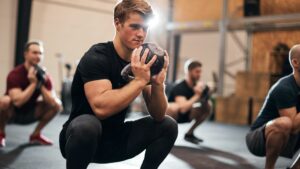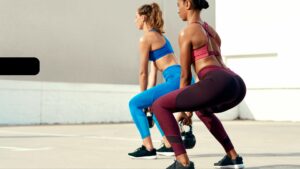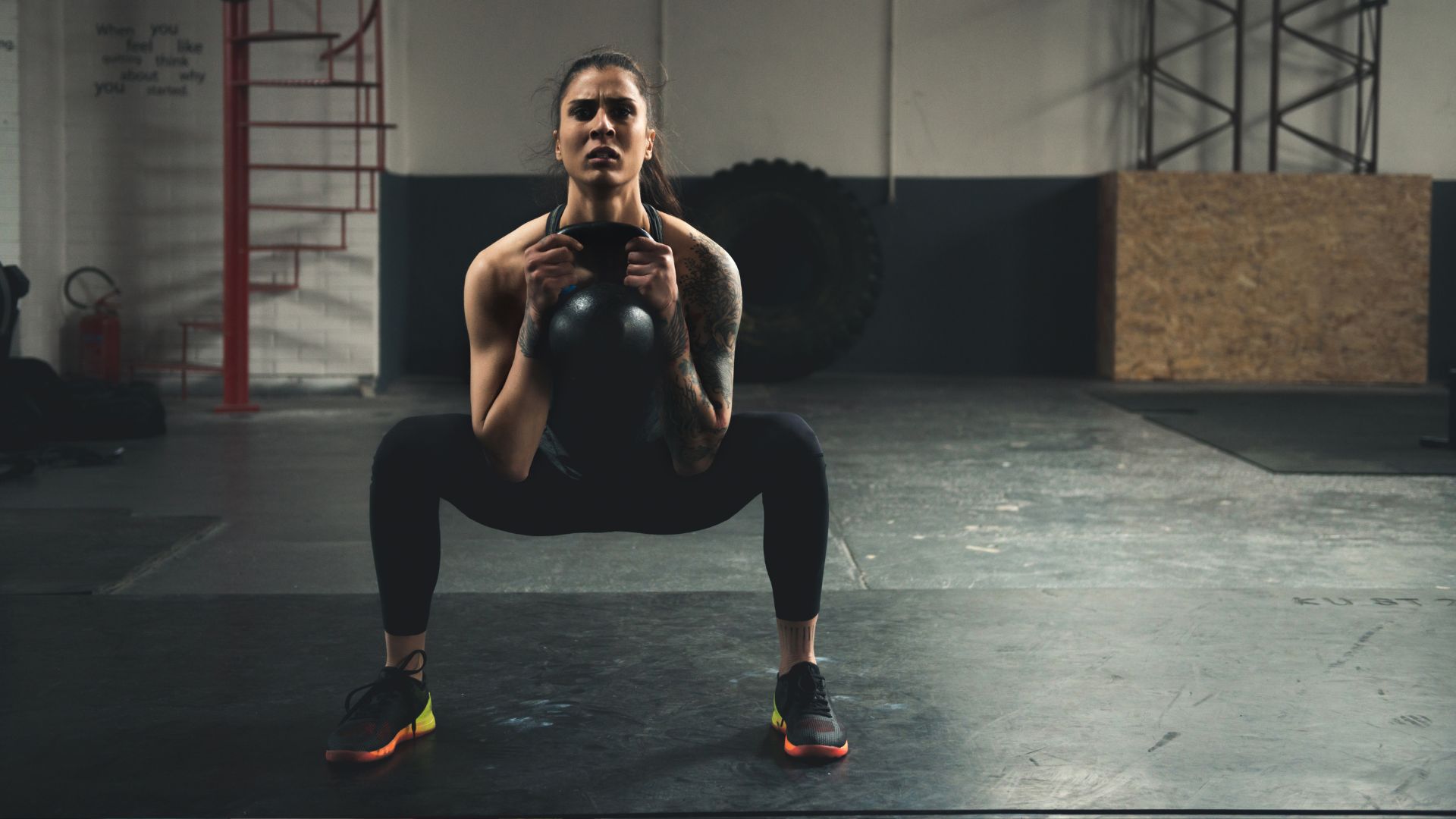Ah, the age-old squat debate: should you power through 50 squats in a flash, or take your time with each one? It’s a question that has left fitness enthusiasts pondering their workout strategy. Well, fear not! In this blog post, we’re going to break down the pros and cons of both fast and slow squats.
Whether you’re aiming to build strength, torch calories, or simply nail that perfect form, we’ve got the lowdown to help you decide which approach is better suited for your fitness journey. Let’s lace up those sneakers and dive right in!
Understanding whether or not to do 50 squats in a row fast, or slow.
Since both the fast and slow squats have their advantages, and the choice depends on your fitness objectives, to tailor your specific fitness goals and level of experience, the best approach may involve a mix of both fast and slow squats.
The speed at which you perform squats can influence your workout goals and muscle engagement.
Let’s explore them each:
Fast Squats:
Cardiovascular Benefits: Performing squats quickly can elevate your heart rate and provide a cardiovascular workout.
Explosive Power: Fast squats can help improve explosive power, making them beneficial for athletes, sprinters, and those focusing on plyometric exercises.
Calorie Burn: Speedy squats can lead to a higher calorie burn during the workout.
Slow Squats:
Muscle Development: Slow squats engage your muscles for a longer duration, which can result in better muscle development, especially in the quadriceps, hamstrings, and glutes.
Improved Form: Slower squats allow you to focus on maintaining proper form, which can reduce the risk of injury.
Time Under Tension: Slower squats increase the time your muscles are under tension, which can lead to muscle hypertrophy (growth).
Here are some considerations to help you decide which is better for you:
Goals: If your primary goal is building muscle and strength, slower squats may be more effective.
If you want to improve cardiovascular fitness or explosiveness, faster squats may be preferred.
Fitness Level: Beginners may benefit from starting with slow squats to establish proper form and muscle engagement before progressing to faster variations.
Variation: Incorporating both fast and slow squats into your routine can provide a balanced approach, targeting different aspects of fitness.
Injury Risk: Fast squats can increase the risk of injury if proper form is not maintained, so be cautious and prioritize form over speed.
Ultimately, the best approach may involve a mix of both fast and slow squats, tailored to your specific fitness goals and level of experience.
It’s also advisable to consult with a fitness professional or personal trainer to create a workout plan that aligns with your objectives and ensures safe and effective squatting techniques.

Further explanations.
Let’s dive deeper and elaborate further on all the points mentioned.
First let’s dive deeper into the explanations for the cardiovascular benefits, explosive power improvement, and calorie burn associated with fast squats:
Fast Squats.
Cardiovascular Benefits: Elevated Heart Rate:
When you perform squats quickly, your body requires more oxygen to fuel the muscles’ rapid contractions.
To meet this demand, your heart rate increases, leading to improved cardiovascular fitness.
Aerobic Conditioning:
Fast squats can transition from a predominantly anaerobic exercise (muscle-focused) to an aerobic one (heart and lungs-focused) when performed continuously.
This aerobic element helps enhance your heart and lung health over time.
Calorie Burn:
The increased heart rate and oxygen consumption during fast squats contribute to burning calories, which can aid in weight management and overall fitness.
Explosive Power: Muscle Recruitment:
Fast squats require rapid recruitment of muscle fibers, particularly the fast-twitch muscle fibers.
This recruitment is crucial for generating explosive power.
Plyometric Effect:
Fast squats mimic a plyometric or jump-like movement, which can improve your ability to generate force quickly.
This is valuable for athletes in sports like basketball, sprinting, and weightlifting.
Neuromuscular Adaptations:
Regularly performing fast squats can lead to neuromuscular adaptations, such as improved coordination and muscle firing patterns, enhancing your overall power output.
Calorie Burn: Intensity:
Fast squats are more intense and metabolically demanding than slow squats due to the rapid muscle contractions.
This increased intensity results in a higher calorie expenditure during the workout.
Afterburn Effect:
High-intensity exercises like fast squats can trigger the “afterburn effect” or excess post-exercise oxygen consumption (EPOC).
This means your body continues to burn calories at an elevated rate even after the workout is completed.
Fat Loss:
The combination of increased calorie burn and the afterburn effect can contribute to fat loss and weight management when fast squats are part of a well-rounded fitness routine.
It’s important to note that while fast squats offer these benefits, proper form is crucial to avoid injury.
Maintaining control and stability during the movement is essential. If you’re new to fast squats or have any underlying health concerns, consider consulting a fitness professional to ensure you’re performing them safely and effectively.
Additionally, incorporating a mix of exercise modalities in your routine can provide a well-rounded approach to achieving your fitness goals.
Slow Squats.
Let’s delve into the explanations for the benefits of slow squats, including muscle development, improved form, and time under tension:

Muscle Development: Engagement Duration:
Slow squats require you to move through the exercise at a controlled pace, which means your muscles are engaged for a longer duration during each repetition.
Muscle Fiber Recruitment:
This extended engagement allows for the recruitment of a greater number of muscle fibers, particularly in the quadriceps, hamstrings, and glutes, which are the primary muscles targeted during squats.
Hypertrophy:
The prolonged time under tension in slow squats can lead to muscle hypertrophy, or growth.
When muscles experience consistent tension over an extended period, they adapt by increasing in size and strength.
Improved Form: Control and Stability:
Slow squats require a high degree of control and stability throughout the entire range of motion.
This forces you to maintain proper form, including alignment of the knees, hips, and spine.
Reduced Injury Risk:
Focusing on form minimizes the risk of injury.
By moving slowly, you can better identify and correct any imbalances or weaknesses that may lead to poor form and potential injuries during faster movements.
Mind-Muscle Connection:
Slower squats allow you to establish a stronger mind-muscle connection.
This means you become more aware of how your muscles are working during the exercise, enhancing your ability to target and engage specific muscle groups effectively.
Time Under Tension: Muscle Adaptation:
Muscles respond to the duration they are under tension. Slow squats increase the time your muscles spend working against resistance, promoting muscle adaptation and growth.
Metabolic Stress:
Prolonged tension on the muscles also creates metabolic stress, which is a key factor in muscle hypertrophy. This metabolic stress can lead to cellular changes that support muscle development.
Strength Gains:
While slow squats are associated with muscle hypertrophy, they also contribute to strength gains. The controlled nature of the exercise allows you to progressively increase the weight you use, further enhancing muscle and strength development.
Incorporating slow squats into your fitness routine can be particularly beneficial for individuals looking to build muscle size, improve muscular endurance, or correct form issues.
However, it’s important to balance your workout routine with a variety of squatting speeds and other exercises to achieve a well-rounded approach to fitness and avoid overuse injuries.
Some considerations to help you decide:
let’s expand on the considerations for choosing between fast and slow squats:
Goals:
Building Muscle and Strength (Slow Squats):
If your primary objective is to increase muscle size and overall strength, slow squats are typically more effective.
The extended time under tension and muscle fiber recruitment in slow squats promote muscle hypertrophy.
Improving Cardiovascular Fitness and Explosiveness (Fast Squats):
If your goal is to enhance cardiovascular fitness or develop explosive power, fast squats are a better choice.
The rapid, dynamic nature of fast squats elevates your heart rate and targets fast-twitch muscle fibers, which are crucial for explosive movements.
Fitness Level:
Beginners (Slow Squats):
Beginners often benefit from starting with slow squats because they allow you to focus on proper form and technique without the added complexity of high speed.
This foundation in good form reduces the risk of injury and provides a solid base for progressing to faster variations later.
Intermediate to Advanced (Fast and Slow Squats):
As you gain experience and strength, incorporating both fast and slow squats into your routine can provide a well-rounded training approach.
This variation keeps your workouts interesting and allows you to target different aspects of fitness.
Variation:
Balanced Approach:
Combining both fast and slow squats in your routine can be advantageous.
Slow squats build muscle and improve form, while fast squats enhance cardiovascular fitness and explosiveness.
This balanced approach ensures that you address multiple fitness components.
Periodization:
Many fitness programs incorporate periodization, which involves cycling between different training intensities and speeds.
This approach can prevent plateaus and promote continuous improvement.
Injury Risk:
Prioritizing Form (Fast Squats):
When performing fast squats, it’s crucial to prioritize form over speed. The risk of injury increases if you sacrifice proper form for the sake of speed.
Take the time to master the movement pattern and gradually increase the speed as you become more proficient.
Reduced Injury Risk (Slow Squats):
Slow squats inherently reduce the risk of injury because they allow for more controlled movements.
This is particularly important for individuals who may have pre-existing joint issues or are new to strength training.
In summary, the choice between fast and slow squats should align with your specific fitness goals, your current fitness level, and your focus on maintaining proper form.
Incorporating both types of squats, when appropriate, can create a well-rounded workout routine that targets various aspects of fitness and minimizes the risk of injury.
Consulting with a fitness professional or trainer can also help tailor your squatting regimen to your individual needs and objectives.
A concise tabular on this here.
Here’s a concise tabular comparison of doing 50 squats in a row fast versus doing 50 squats slowly, highlighting their respective advantages:
| Aspect | 50 Fast Squats | 50 Slow Squats |
|---|---|---|
| Muscle Engagement | Engages muscles rapidly, targeting fast-twitch fibers. | Engages muscles for a longer duration, promoting muscle hypertrophy. |
| Cardiovascular | Elevates heart rate, good for cardiovascular fitness. | Less emphasis on cardiovascular benefits. |
| Explosive Power | Enhances explosive power and agility. | Focuses on strength and endurance. |
| Calorie Burn | Higher calorie burn due to intensity. | Still burns calories but less intensely. |
| Form Emphasis | Requires careful form to prevent injury. | Allows for more controlled form, reducing injury risk. |
| Suitable for Beginners | May pose challenges for beginners due to speed. | Suitable for beginners to establish form and strength. |
| Muscle Growth | Less emphasis on muscle hypertrophy. | Promotes muscle growth and development. |
Remember that the choice between fast and slow squats depends on your fitness goals and level of experience.
A well-rounded workout routine may include both variations at different times to target different aspects of fitness.
Always prioritize proper form and safety, regardless of your chosen squat speed.
Conclusion.
In conclusion, whether to perform 50 squats in a row fast or slow depends on your fitness goals and experience level.
Fast squats elevate heart rate, enhance explosive power, and burn calories, making them suitable for cardiovascular fitness and agility.
Slow squats engage muscles for a longer duration, promote muscle growth, and prioritize proper form, making them effective for strength and muscle development, especially for beginners.
A balanced approach, incorporating both variations at appropriate times, can provide a well-rounded fitness routine while minimizing injury risk.

Hey there, it’s Mike Rrsq, the Editor-in-Chief over at Jsquat.com, and I’m absolutely obsessed with all things squat fitness! I’ve been lucky enough to get some serious recognition for my work in this field. With a solid background in the fitness and wellness industry, I’ve been there right from the get-go, helping shape this website into what it is today.
You see, I’m not just the boss around here; I’m also a passionate contributor. I love sharing my insights through my articles, and trust me, they’re not your run-of-the-mill stuff. Each piece I write is a labor of love, filled with my expertise and real-world experience in the fitness universe. So, if you’re into fitness and looking for some inspiration, you’re in the right place!

